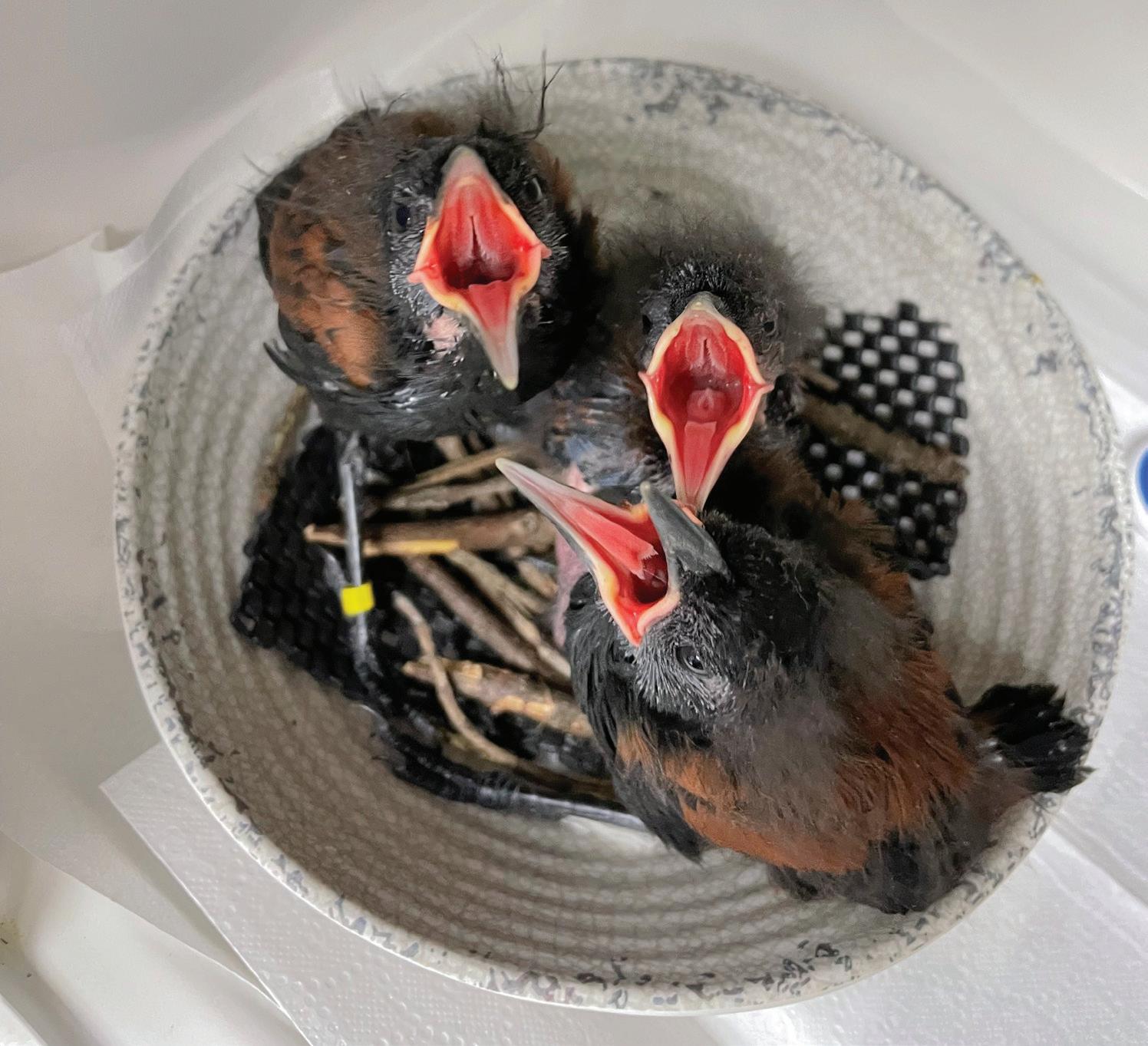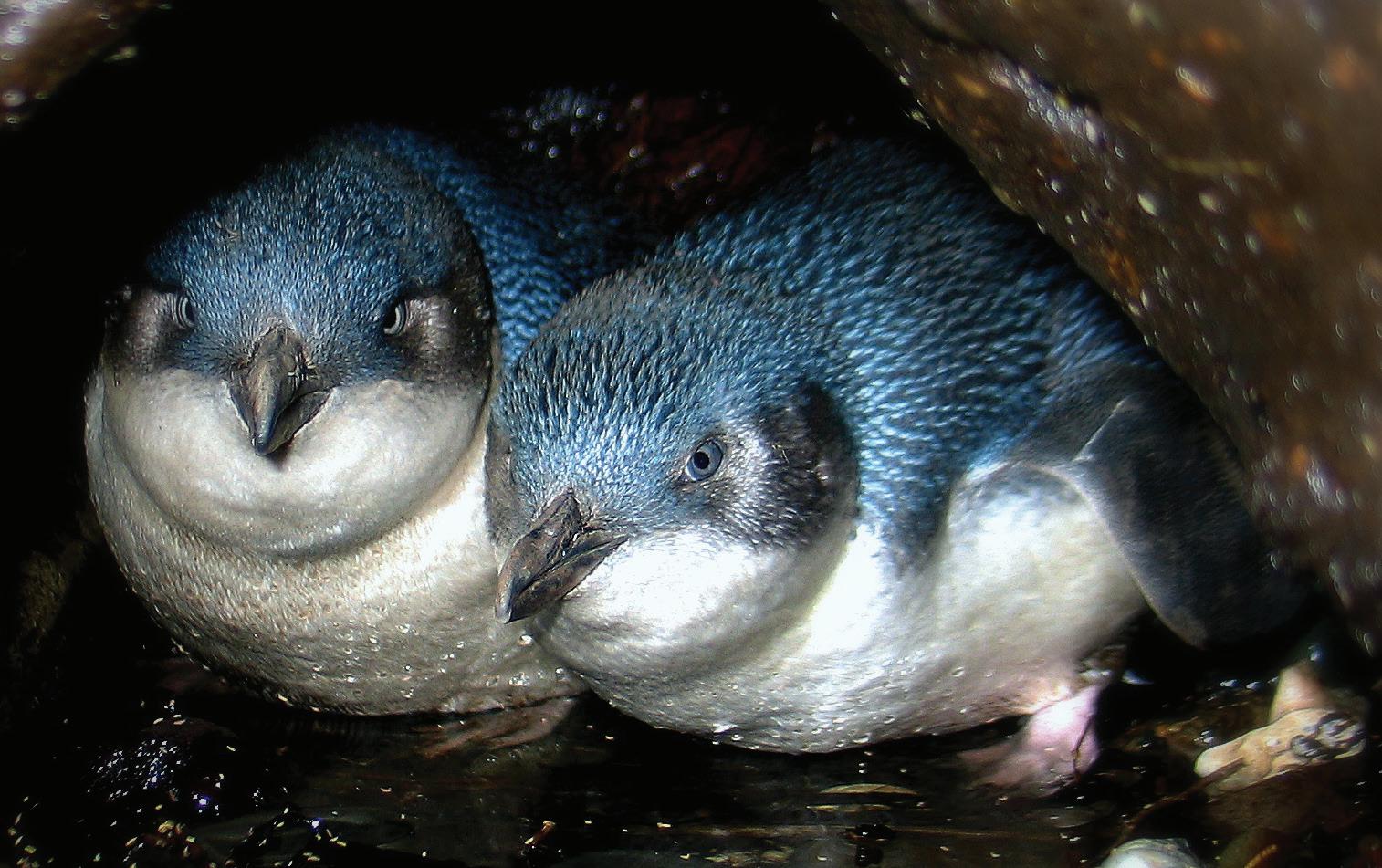
5 minute read
Disrupted breeding season comes to an end
With the breeding season having finished, Kathryn Jones assesses the status of the juvenile tīeke, hihi and kōkako on the Island, which have been closely monitored during that time.
The post-breeding survey undertaken in February entailed 40 hours of walking all over the Island and recording hihi seen at feeders: 160 were recorded, 108 of which had PIT tags. (Hihi with tags continue to be monitored closely to ensure the microchips inside their bands are still performing.)
Advertisement
In the quieter moments, sugar feeders were deep cleaned and 40 nest boxes replaced. Nest boxes are replaced every five years and the old nest boxes dismantled.
Kōkako
We can now confirm that Rēkohu and Yindi are together, which means the season finished with 23 pairs of kōkako.
After all the shocking weather there appear to be only eight surviving fledglings – six females, one male and one unknown (as once again we could not access Pūtōrino and Sapphire's nest). Te Rae and Chatters, Pureora and Crown, Shelly and Tama, plus Discovery and Sarang, had one female fledgling each. Koto and Apato had two female fledglings. Honey and Rimu produced another male this season; their son Haar hatched in the 2020/21 season.
Oran and Haar and Jenny and Slingshot had one fledgling each but neither has been
Tīeke
The tīeke breeding season started with a translocation of four eggs from nest boxes to Auckland Zoo. The zoo has a permit to take a small number of tīeke from the Island to supplement the captive population.
Taking eggs and raising chicks in captivity has several advantages over moving adult birds, not least the lack of stress to the birds.
The curator of birds at the zoo, Juan Cornejo, visited the Island in October and collected fertile eggs from three boxes. At least one fertile egg was left in each so the parent birds still had the opportunity to raise a chick.
At the zoo, one of the chicks had difficulty hatching and died shortly afterwards, but the other three, a female and two males, thrived under the care of zoo staff – 18 feeds per day at first! They are now healthy juveniles and will eventually be on display in the forest aviary.
On the Island, monitoring was disrupted by wild weather and consequent ferry cancellations, but it was clear that nest box use and rates of success and failure followed the pattern of the last few years (see table).
Nesting attempts were made in 22 of the 151 boxes, and 10 of these failed at egg stage (the eggs failed to hatch or were broken). As far as we can tell, none failed at chick stage and at least one chick fledged from each of the remaining 12 boxes, including two of those from which eggs had been translocated in October.
Hihi seen since the cyclone. Waitangi and Lyric were feeding a chick or chicks but this nest also failed after the last bout of bad weather.
This year, 75 females attempted to breed, raising 193 fledglings.
In January, 31 females attempted a second nest, but many of them failed early, resulting in only a handful of nests to monitor. The last chick fledged on 16 February.
In early February, Wairua and Parininihi’s two chicks were found predated in their nest. Haeata and Hotu’s chick also failed to fledge. Aquarius and Rakataura’s nest failed yet again, possibly due to where it was located over a cliff, which leaves any nest more vulnerable to predation. Rehu and Noel, a very experienced pair, also had a nest fail this season. Phantom, who is now paired with her grandson Wakei, was also unsuccessful. Over the previous 12 years, when she was paired with Te Hari, she had a number of fledglings.
Pūtōrino and Sapphire’s unbanded fledgling from last season has finally been caught and banded GyM-JY. This kōkako’s behaviour was male-like and his sex has now been confirmed. As we have more females than males on the Island now, he is proving to be very popular with the unattached females. He has been named Aweawe.
Our oldest bird, Te Hari, who has been on his own for over a year, was recently seen near the wharf area.
Kororā/little penguin
This was their poorest breeding season since systematic monitoring began in 2019-20.
Nest boxes were occupied from mid-July, with eggs laid late in August. Nine pairs occupied boxes and all laid two eggs. Two of the nests failed at egg stage but the others all hatched, producing 14 chicks.
By late November, eight of the chicks had died and the remaining six had fledged. Such a low success rate is assumed to be caused by the inability of the parents to provide sufficient food, but there is no proof that this was the case (see p.14-17).
This is the first year when none of the pairs attempted a second clutch. Seven boxes were occupied by moulting birds in early to late January. Of the 29 wooden nest boxes available, nine were used, either for breeding or moulting, and many others had been visited. This is an encouraging increase from three boxes used last season.

Positive indications from transect survey data
Early signs suggest most species have had a reasonable breeding season, with population numbers up from the eight-year lows recorded last year.
Data analysis has yet to be completed but one indication is that the total number of birds recorded in the survey, which was 7674, is up 623 from last year. These totals don’t indicate actual population size as they will include many birds counted multiple times over the 320 transect counts.
For most of the Island’s common species, tīeke, toutouwai/robin, korimako/ bellbird, hihi, kererū and blackbird, estimates all increased.
Pīwakawaka/fantail, mātātā/fernbird and kākāriki have hardly changed, while pōpokatea/whitehead and tūī were down. Tūī are very mobile and, at the time of the survey, may have moved elsewhere in search of nectar not available on the Island.
The annual transect survey was carried out a little later than usual in mid- to late-March. The aim of the survey is to obtain estimates of the population sizes of those birds which live in the bush areas on the Island. A more detailed article on the survey results will follow in a future edition of Dawn Chorus
Other seabirds
It’s been the best season so far for tarāpunga/ red-billed gulls, with 330 nesting pairs. This is up from just 80 last season. Monitoring began 10 years ago.
The tara/white-fronted tern breeding population varies dramatically from year to year and the majority of years have no or very few nests. This year we can report a reasonable 35 to 50 pairs.
We located only 22 nesting pairs of karoro/ black-backed gulls, which is well below the 10-year average of 35 pairs.
There were 10 kāruhiruhi/pied shag nests, though only five were active during the survey period.
Kuaka/diving petrels may have had reduced nesting success this year as only two chicks were banded from the 29 study burrows. The boxes usually have eight to 10 chicks. There was no other sign of any reduction in the number of adults visiting the colony.
• Compiled by Kathryn Jones, with contributions from Morag Fordham, Emma Gray, Kay Milton and John Stewart









